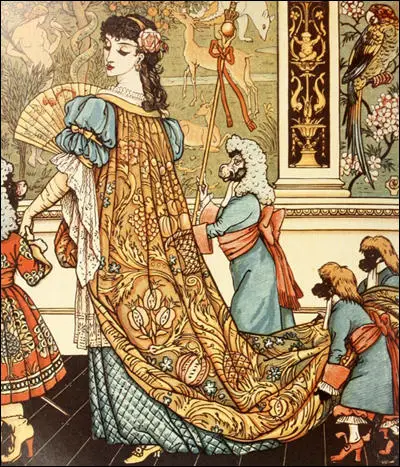Walter Crane

Walter Crane is a British illustrator, painter, and designer who was born on August 15, 1845, in Liverpool, England. Crane was born to portrait painter Thomas Crane and through him, Walter was exposed to art at a very early age. His father would encourage Walter to do art and at a young age, Walter would decorate books with watercolour for amusement. Seeing potential in him, his father would introduce Crane to wood engraver WJ Linton. Linton was the head at one of the best printing companies at London and he would have a big influence on Crane’s art and political views. Linton was a socialist and would inspire Crane’s worldview and through him, Crane would learn the printing and engraving methods by using various assignments. His apprenticeship ended in 1862 but his experience and connection with Linton landed him a job with illustrator Edmund Evans. With colour printing becoming popular, Linton employed Crane to design book covers for children’s books, draw nursery rhymes and fairy tales. Crane quickly adapted to his new job and became very successful. Despite this, he saw illustrating for children’s books boring and eventually expanded elsewhere. Throughout his career, Crane would often work with socialist newspapers and magazines. Even before drawing children’s books, Crane did commissions for the radical newspaper “The Graphic” and work for people who had radical views like John R. Wise. Crane saw a work by Ford Maddox Brown showing the head of the Christian Socialist movement looking at a group of men working. This painting would inspire Crane to do political activism. He supported the Liberal Party and people with radical views, did work for the journal “Justice”, and joined the Social Democratic Federation. Later on, Crane also joined the Arts and Crafts movement which looked back at the simpler times of medieval art and old printing techniques which had a more distinct look that matched Crane’s fantastical style. Crane also wrote books which focused on his art, life, and socialist views
Crane’s art style was inspired by old Italian masters, pre-Raphealites, and works done by John Millais and Rosetti. But an important inspiration for Crane was Japanese colour prints which he used similar methods to his children books. Crane preferred flat, decorative compositions, and deep perspective similar to Japanese prints. I overall admire Walter Crane’s work. His style is very simplistic yet colourful. His combination of using medieval style art, use of colour and composition, and delicate linework make his artworks very beautiful and gorgeous to look at. I can see him as a very talented illustrator and an inspiration for more linework style of illustration.




Sources/Images
https://www.illustrationhistory.org/artists/walter-crane
https://spartacus-educational.com/Jcrane.htm
https://www.britannica.com/biography/Walter-Crane
Images
https://www.royalacademy.org.uk/art-artists/name/walter-crane
Leave a Reply